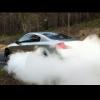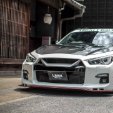98 Vs 95 Octane With The Factory Ecu
Announcements
-
Similar Content
-
Latest Posts
-
Ah right. Maybe my rb just loves chewing through batteries lol.
-
On the R34 can't you just unplug the IACV? This is the way I've always done it on the R33. Disconnect IACV, get it idling around 650rpm, and then do a power reset on the ECU to get it to relearn idle (factory ECU). The big reason no one has touched on as to why you'd want to get the base idle right, is that it means the computer needs to make smaller adjustments to get a good idle at 700-750rpm. Also, cleaning the IACV won't normally make the car suddenly idle lower or higher. The main issue with the IACV gumming up is that the valve sticks. This means the inputs the ECU gives, aren't translating to changes in air flow. This can cause idle choppy ness as the ECU is now needing to give a lot of input to get movement, but then it moves too far, and then has to do the same in reverse, and it can mean the ECU can't catch stalls quickly either.
-
12.8 for a great condition, fully charged battery. If the battery will only ever properly charge to about 12.2V, the battery is well worn, and will be dead soon. When I say properly charge, I mean disconnect it from the car, charge it to its max, and then put your multimeter on it, and see what it reads about an hour later. Dieing batteries will hold a higher "surface charge", but the minutest load, even from just a multimeter (which in the scheme of things is considered totally irrelevant, especially at this level) will be enough over an hour to make the surface charge disappear. I spend wayyy too much time analysing battery voltages for customers when they whinge that our equipment (telematics device) is causing their battery to drain all the time. Nearly every case I can call it within about 2 months of when the battery will be completely dead. Our bigger customers don't even debate it with me any more ha ha ha. A battery at 12.4 to 12.6 I'd still be happy enough with. However, there's a lot of things that can cause a parasitic draw in a car, first of which is alarms and immobilisers. To start checking, put your multimeter into amps, (and then connect it properly) and measure your power draw with everything off. Typical car battery is about 40aH. Realistically, you'll get about half this before the car won't start. So a 100mA power drain will see you pretty much near unstartable in 8 days.
-
Car should sit at 12.2 or more, maybe 12.6 or 12.7 when fully charged and happy. If there is a decent enough parasitic load then it will certainly go lower than 12.2 with time. You can't beat physics.
-
Ok guess I can rule out the battery, probably even the starter and alternator (maybe) as well. I'm gonna clean those leads and see what happens if it's still shit I might take it to an auto electrician. Unless the immobiliser is that f**king heavy, but it shouldn't be. If I start the car every day, starts up perfectly never an issue. Isn't 12v low, shouldn't it be around 12.5v?
-








Recommended Posts
Create an account or sign in to comment
You need to be a member in order to leave a comment
Create an account
Sign up for a new account in our community. It's easy!
Register a new accountSign in
Already have an account? Sign in here.
Sign In Now